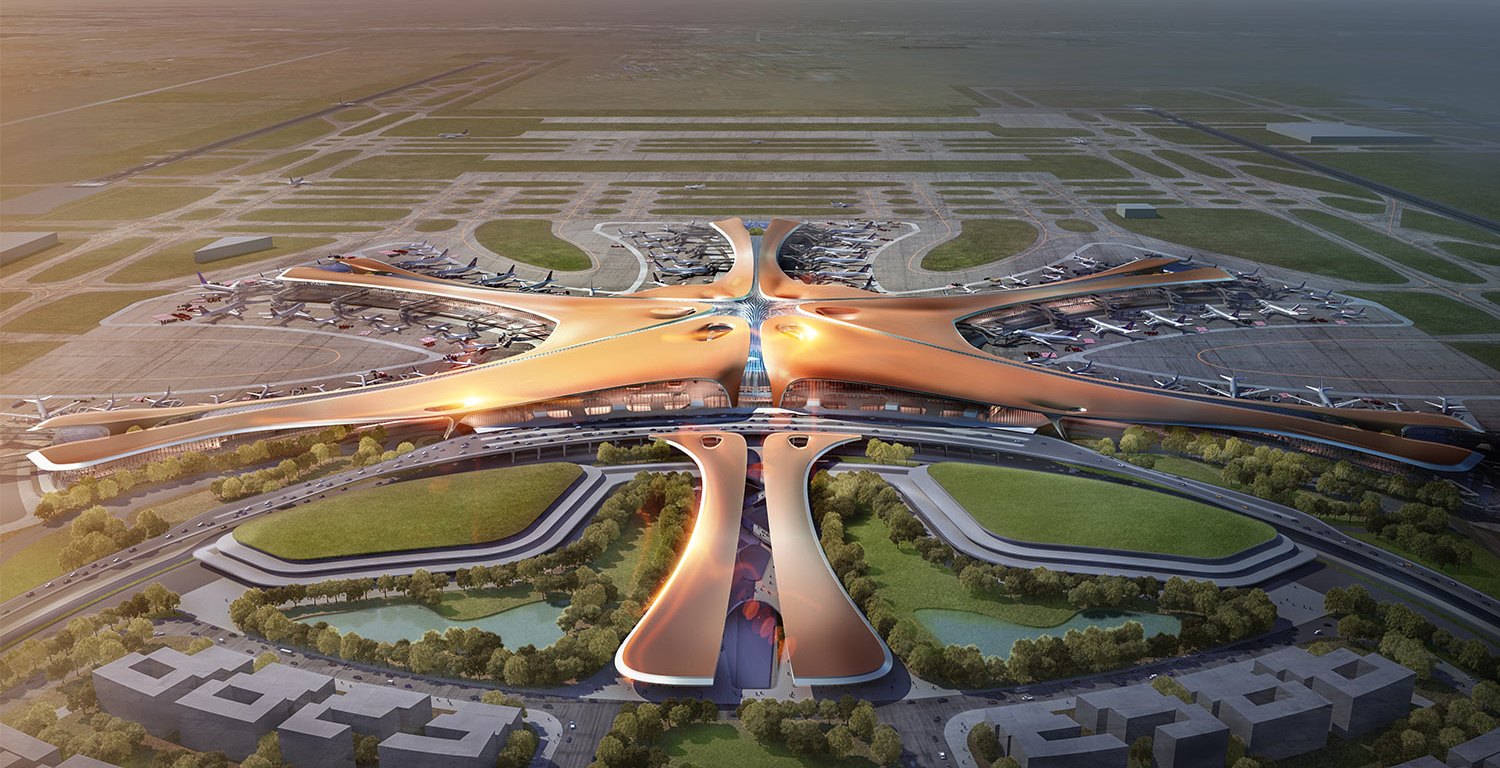Beijing, 12 June. Beijing’s new Daxing International Airport. While Part 1 was a general overview of the airport and its integration into the Beijing-Tianjin-Hebei metropolitan area, Part 2 focuses on the impact on Chinese airlines. Although there are over 30 domestic airlines in China, the landscape is dominated by 3 large state-owned airline groups: Air China Group, China Southern Group, and China Eastern Group (see a previous article which goes over the history of Chinese airlines). Each of these groups have a geographic area where they are historically dominant, and in the case of Beijing that would be Air China Group. In 2018, Air China Group represented nearly 40% of all flights in the capital, leaving 20% to China Eastern Group, 16% to China Southern Group, and the rest to either independent domestic airlines or international airlines [1].
The competitive landscape in the area has been relatively stable in recent years, Beijing Capital being the only airport in the area (excluding Nanyuan Airport which only serves China Capital Airlines). The soon-to-start operations of Daxing Airport will be a major shift in the landscape, notably because acording to CAAC plans, China Eastern Airlines Group and China Southern Group will move (almost) all operations to Daxing International Airport, while Air China Group will stay in Beijing Capital. This split between the country’s 3 largest airlines has multiple consequences, which may play favorably or be detrimental.In order to have a smooth transition, The CAAC announced that both airports would follow the so-called “One City-Two Airports” plan, which defines the incremental switch to Daxing airport over a period of 2 years. Earlier this year in January 2019, CAAC published the Daxing International Airport Operation and “One City-Two Airports” Flight Distribution Plan (rough translation of 北京大兴国际机场转场投运及“一市两场”航班时刻资源配置方案, see [2] and [3]). This plan exposed how flight slot resources would be allocated to different airlines. Essentially, Air China Group will remain in Beijing Capital, while China Southern Group and China Eastern Group are to move to Daxing International Airport. All other Chinese airlines will have to choose between one airport or another, as no domestic player can operate at both airports. More flexibility is granted to foreign airlines, although the latter are likely to choose between one or another for operational efficiency.
Interestingly though, HNA Group, the fourth largest airline group in China seems to have decided to keep a foot in both airports, through allocating its different airlines to both airports (Hainan Airlines and Grand China Airlines will stay in Beijing Capital, but China Capital Airlines will move from Nanyuan Airport to Daxing).
Similarly, the CAAC announced in April that it would allow China Eastern to operate a small number of flights at Beijing Capital, in exchange for a decrease in the number of slots at Daxing (which were granted to Air China in exchange). This was essentially because China Eastern feared it would lose one of the most lucrative flights in the Chinese market: the Beijing-Shanghai Express Line* (see footnote).
According to CAAC’s “One City – Two Airports” plan, airlines will move progressively between October 2019 and October 2021. At the end of this transition period, Daxing International Airport is expected to reach 45 million annual passengers. The two-year calendar is as follows:
Between 27/10/2019 and 20/03/2020, China Eastern and China Southern must move at least 10% of their flights from Beijing Capital to Daxing. Hebei Airlines must move “a portion” of their flights, and Beijing Capital Airlines will move all of its flights from Nanyuan Airport to Daxing.
Between 29/03/2020 and 24/10/2020, China Eastern and China Southern must move at least 60% of their flights from Beijing Capital to Daxing. Xiamen Airlines and Chongqing Airlines must move all their flights to Daxing, and Hebei must move an “increased” amount of their flights.
Between 25/10/2020 and 27/03/2021, China Eastern and China Southern must move at least 80% of their flights, and 100% of their international flights to Daxing.
Between 28/03/2021 and 30/10/2021, 100% of China Eastern and China Southern flights must have shifted to Daxing. Shanghai Airlines must also move all their flights to Daxing during this period.
*The Beijing-Shanghai Express Line is essentially a high frequency line set up collectively by 5 large airlines (Air China, China Eastern, China Southern, Shanghai Airlines, Hainan Airlines) between Beijing Capital and Shanghai Hongqiao. It puts together and optimizes security checks, waiting areas, administrative processing, and ticket changes in case of a flight delay. It also set up a unique web portal for clients. One of the main reasons for this airline alliance was to counter the increasing competition from high speed trains on this trunk route.
How Will Airlines Operating in Beijing be Impacted?
Among the major factors impacting airlines are :
The proximity of each airport to the urban areas that matter (populated & business districts)
The level of international connections each airport has, acting has an international hub
Capacity or inter-terminal transportation bottlenecks
Let’s dig deeper into each of the aforementioned points.


Comment here